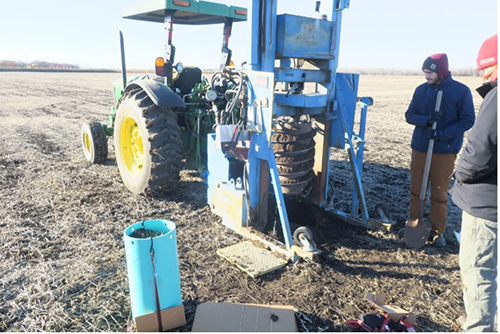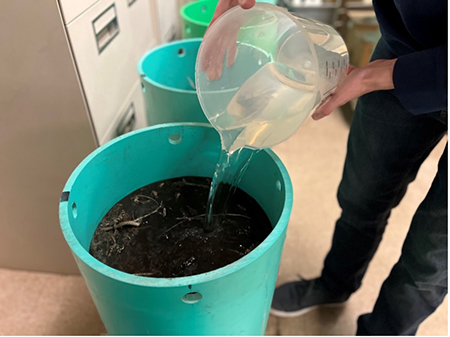
by Matt Belanger
Chloride contamination is becoming a rising concern in Minnesota’s ground and surface waters. In recent years, more and more surface waterbodies and groundwater aquifers are being impacted by chloride, as concentrations slowly increase. While much of these impacts are seen in waterbodies in the Twin Cities Metro Area, there are many other sources of water that are impacted in rural areas of the state as well. This contamination can largely be attributed to winter road salt application as well as discharge from wastewater treatment plant facilities, however, it is unclear what the impact livestock manure, which is applied to croplands as a nutrient dense fertilizer, has on rising chloride trends in Minnesota. There is very little data available as to how chloride concentrations vary by manure type, and not much is known about how chloride from manure moves through different soils after it is used as a fertilizer.
WRS graduate assistant Matt Belanger and his fellow researchers in the Manure Management and Water Quality Research Lab are working to better understand how chloride from manure is transported into groundwater. They would like to know how different types of manure, from liquid to solid, and different soil types, from sand to clay, affect how chloride in manure moves into groundwater, and compare their results to chloride movement from commercial fertilizers.

Belanger collected large intact soil columns from four University of Minnesota research stations and carried out a series of leaching studies in the lab to examine how chloride from manure and fertilizer moves through, or leaches, into groundwater. Soil columns were applied with one of two different manures or a commercial fertilizer and then were exposed to three irrigation events simulating two inches of rainfall per event. The water was allowed to drain from each soil column and collected to be analyzed for the concentration of chloride from the water. This will inform Matt and his lab team how much chloride is able to move through each soil type from each type of manure.
This research will be used to inform farmers and managers on the extent to which manure contributes chloride into Minnesota ground and surface waters. A better idea of how manure application impacts water quality will justify more frequent sampling of manure for chloride prior to field application and assist in creating an accurate chloride mass balance for the state of Minnesota.